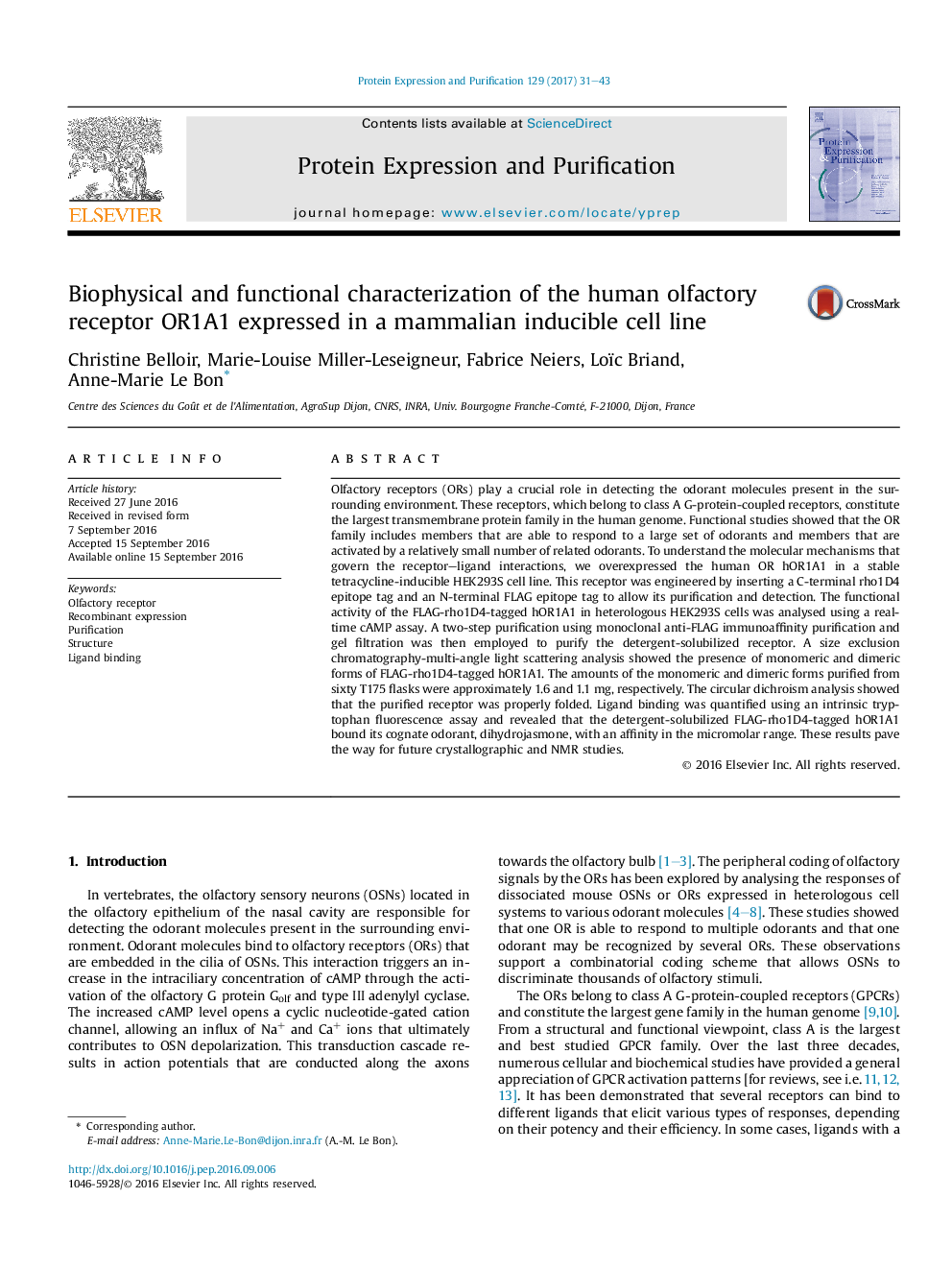| کد مقاله | کد نشریه | سال انتشار | مقاله انگلیسی | نسخه تمام متن |
|---|---|---|---|---|
| 5516163 | 1542312 | 2017 | 13 صفحه PDF | دانلود رایگان |

- The human olfactory receptor hOR1A1 was expressed in inducible HEK293S cells.
- Immunoaffinity purification and gel filtration were employed to purify the receptor.
- Purified hOR1A1 was properly folded and presents a monomeric and dimeric structure.
- The purified receptor binds odorant molecules with a high affinity.
Olfactory receptors (ORs) play a crucial role in detecting the odorant molecules present in the surrounding environment. These receptors, which belong to class A G-protein-coupled receptors, constitute the largest transmembrane protein family in the human genome. Functional studies showed that the OR family includes members that are able to respond to a large set of odorants and members that are activated by a relatively small number of related odorants. To understand the molecular mechanisms that govern the receptor-ligand interactions, we overexpressed the human OR hOR1A1 in a stable tetracycline-inducible HEK293S cell line. This receptor was engineered by inserting a C-terminal rho1D4 epitope tag and an N-terminal FLAG epitope tag to allow its purification and detection. The functional activity of the FLAG-rho1D4-tagged hOR1A1 in heterologous HEK293S cells was analysed using a real-time cAMP assay. A two-step purification using monoclonal anti-FLAG immunoaffinity purification and gel filtration was then employed to purify the detergent-solubilized receptor. A size exclusion chromatography-multi-angle light scattering analysis showed the presence of monomeric and dimeric forms of FLAG-rho1D4-tagged hOR1A1. The amounts of the monomeric and dimeric forms purified from sixty T175 flasks were approximately 1.6 and 1.1Â mg, respectively. The circular dichroism analysis showed that the purified receptor was properly folded. Ligand binding was quantified using an intrinsic tryptophan fluorescence assay and revealed that the detergent-solubilized FLAG-rho1D4-tagged hOR1A1 bound its cognate odorant, dihydrojasmone, with an affinity in the micromolar range. These results pave the way for future crystallographic and NMR studies.
329
Journal: Protein Expression and Purification - Volume 129, January 2017, Pages 31-43